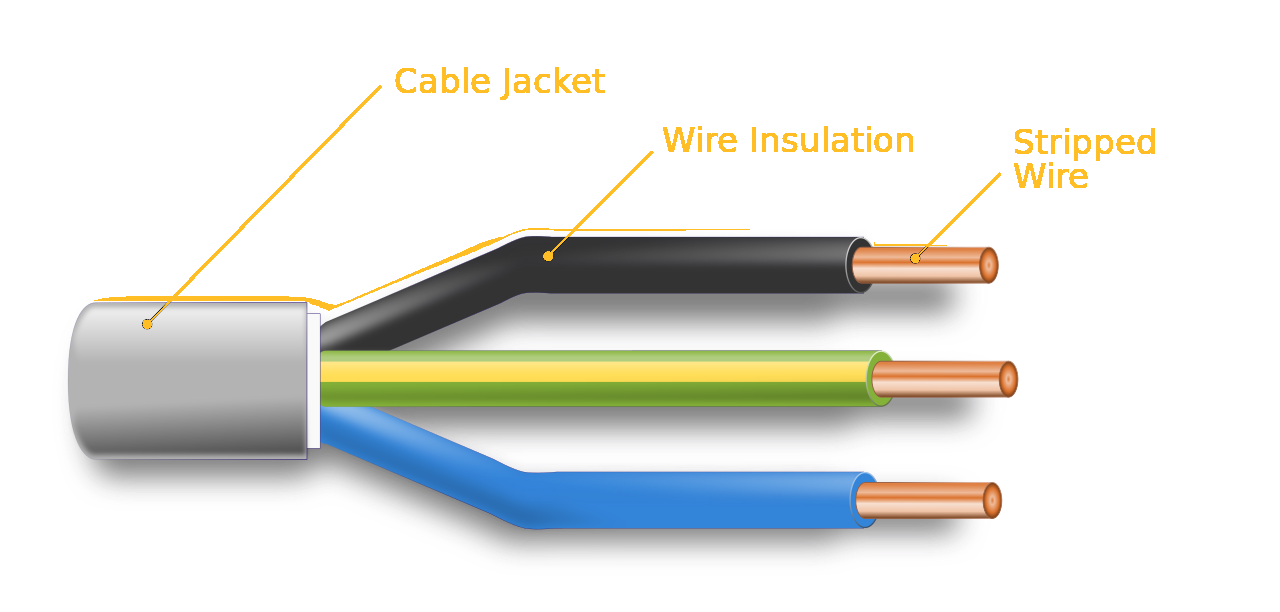Notes on high voltage electricity
Mains electricity is dangerous! I am not an electrician, this is not an authoritative source.
Do not do anything you do not fully understand and default to hiring professionals.
None of this is practical advice or instructions. These notes are only an exercise in theoretical understanding.
Terminology
Terms that are commonly used in high voltage/AC/mains electrical systems.
| Term | Symbol | Meaning |
|---|---|---|
| Phase | The live phase, sometimes referred to as just live or hot (US). | |
| Neutral | Completes the circuit back to the source. | |
| Protective earth | Provides as low-impedance path to earth | |
| GFCI / RCD / FI-schutz | Residual-current device, Ground fault circuit interrupter |
-
The term earth is more commonly used in British English, and the term ground is more common in North American English1. Both terms are mostly used synonymously.
-
PE should under normal conditions not carry current. PE is an integral part in home/residential wiring because it causes circuit breakers (GFCI) to trip more quickly in case of leakage current.
-
GFCI/RCD are safety devices that quickly break the electrical circuit if leakage current (typically ) is detected to earth.
In Germany, these are commonly only installed in wet rooms.
-
Ground and neutral are closely related but not the same. Neutral point of an electrical supply system is often connected to earth ground.
-
Stray voltage is electrical potential between two objects that shouldn't have any voltage difference between them2 (e.g. and ).
-
Type C plugs are commonly known as europlug3.
-
Type F plus are commonly known in Germany as Schuko4 (Schutzkontakt).
Germany
| Country | Germany |
|---|---|
| Plug type | Type C (2 prongs, europlug), Type F (3 prongs, Schuko)4 |
| National plug standard | DIN VDE 0620 (C), DIN 49441 (F) |
| Residential voltage | 4 |
| Three-phase voltage (L-L) | |
| Frequency |
- Germany is a full member of IEC.
- In Germany, DKE (Deutsche Kommission Elektrotechinik Elektronik Informationstechnik in DIN und VDE) is the organization responsible for the promulgation of electrical standards and safety specifications5.
- DIN VDE 0100 is the German wiring regulations document that is harmonized with the standard IEC 603646.
Color coding in Europe
DO NOT, under any circumstances, trust wiring coloring. Mains electricity is dangerous! Measure (twice) to confirm.
These are ONLY NOTES and not an authoritative source of any kind. There may be mistakes here, these are only notes taken as an exercise in theoretical understanding.
Do not do anything you do not fully understand and default to hiring professionals.
Color coding required by the European Committee for Electrotechnical Standardization (CENELEC) as defined in IEC 60446 Wiring colors7:
| Color | Conductor | Graphic |
|---|---|---|
| Brown | Single-phase live / L1 | |
| Black | L2 live in 3-phase circuits | |
| Grey | L3 live in 3-phase circuits | |
| Blue | Neutral | |
| Green/yellow | Protective earth |
- IEC 60446 is now a part of IEC 60445 Basic and safety principles for man-machine interface, marking and identification - identification of equipment terminals, conductor terminators and conductors5. IEC 60446 has subsequently been marked as withdrawn.
- In Sweden the local national standard SS-436 40 000 allows the exceptional for blue (normally reserved for neutral) to be used as a connecting wire between switches, between switch and fixture, as well as phase wire in a two-phase circuit under the condition that no neutral wire is used in the particular circuit5.
Earthing systems
The IEC 60364 standard6 defines three "families" of earthing systems, using two letter codes.
- First letter8 denotes how the connection to earth is made:
- T: Direct connection to a point with earth (Latin: Terra)
- I: No point is connected with earth (Latin: insulatum), except maybe with high impedance.
- Second letter8 denotes where earth connection is supplied from:
- T: Local direct connection to earth (earthing rod for example).
- N: Electricity supply network, either separately to by the neutral conductor (TN-S) or combined with the neutral connector (TN-C) or both (TN-C-S).
The different TN systems are:
-
TN-S: PE (protective earth) and N are separate conductors that are connected together only near the power source8.
Normal circuit currents flow only in the N, and PE bonds all equipment cases to earth to intercept any leakage current (installation failure).
Neutral conductor is connected to earth at he point of supply, but no common path to ground exists for circuit current and protective conductor.
-
TN-C: A combined PEN conductor fulfills the functions of both a PE (protective earth) and N conductor8.
Neutral conductor is connected to earth ground at the point of supply, and equipment vcaseds are connected to the neutral (as opposed to PE in TN-S).
The danger with TN-C is that a broken neutral connection will allow all the equipment cases to rise to a dangerous voltage if any leakage of insulation fault exists in any equipment.
-
TN-C-S: Each piece of electrical equipment has both a protective ground connection to its case8, and a neutral connection. These are all brought back to some common point in the building system, and a common connection is then made from that point back to the source of supply and to the earth.
-
TT: No lengthy common protective ground conductor is used1. Instead each terminal, equipment or distribution system has its own connection to earth ground.
